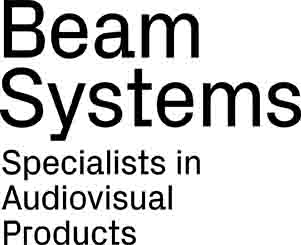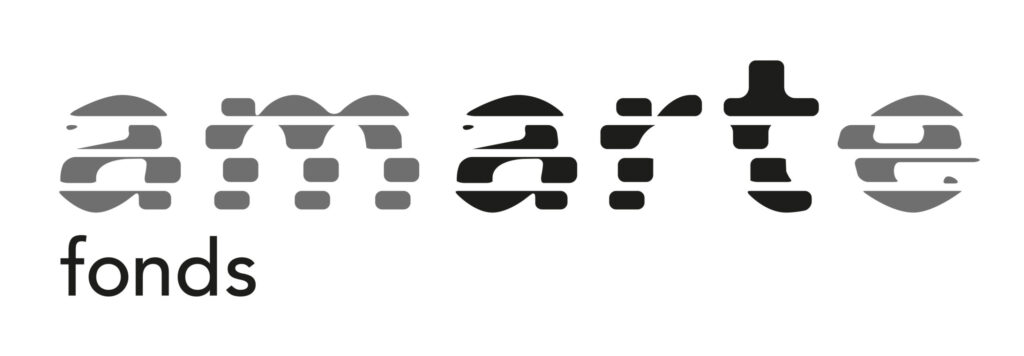future of justice | 2424
2424: The Future of Justice 12 December 2021 – 30 Januari 2022 | Nieuw Dakota art space, NDSM werf, Amsterdam
Dear visitor,
Welcome to the future of justice, where humanity forges new ways of dealing with the consequences of crime and violence. Here, we are no longer limited by ancient methods dominated by policing and incarceration. Instead, our systems centralise healing and safety.
The artworks in this space range from narrative fictions about historical justice processes to abstract explorations of the needs of communities and individuals. They give a voice to seventeenth century youngsters stuck within the Dutch Tuchthuizen (houses of correction) and to contemporary victims and perpetrators. They open the space for future mainstream alternatives to isolation, shame, and fear.
They include platforms for accountability and mental health care, equal access to resources and methods to changing violent communal norms and values.
The works from this exhibit, 2424 — The Future of Justice, are part of an artistic research and trans-media narrative project, Transversal Scepters begun in 2016. The project involves research with advocates for restorative justice, academics, prison guards, detained people and crime survivors among many others.
Within this speculative universe, Juliacks visualises how justice processes are messy and resistant to temporal and spatial boundaries, and how they are always both a societal pursuit as well as an inner quest for everyone individually. Together with curator Suzanne Sanders, coproducer TAAK, and the collaborators of the various fictions, Juliacks radically reimagines the way we view harm and healing and the routes we pursue to address it.
The booklet, introduction and the following texts were written by
Curator Suzanne Sanders(purple)
and juliacks (green.)
Transversal Scepters – the story
The narratives in this exhibition cross time from the 16th century to the year 9021 in the place we now call Amsterdam. A speculative historical fiction with interweaving threads, the stories in this exhibition show characters and their communities grappling with their choices – both harmful and healing.
Transversal Scepters | Station of Justice: Survivor Tunnel, 2021
Passage of Audio Installation, 10 min audio loop, ceramics, textile prints,
dimensions variable, created in (2021)
















“When our stories are told, there is accountability. When there’s accountability, behaviour changes.”
“There is nothing this court could ever do to repay me. There is no revenge that could be served. There is only the revenge I can give of living the life that I am proud of. You cannot take away the things I did despite you.”
“There is no hatred left but there is also no forgiveness. I only have pity on him and hope someday a greater power than ourselves will weigh his soul in a way we cannot.”
“It’s still his to be responsible for, and I just made it clear that I didn’t forgive him. Because forgiveness to me – I don’t believe that forgiving abusers is helpful. It doesn’t help me process my trauma, it doesn’t make me feel better and there are things that I think are unforgivable.”
Textual transcriptions of parts of the audio collage.
When injustice is done, who suffers from it? We tend to focus on the offender and on literally ‘cancelling’ them – as well as their supportive communities as a corollary.
What happens to the relatives and friends of the responsible parties? And while we are moving towards the centralisation of crime survivors and their communities, what would justice mean to them?
The audio piece playing in this space is composed of a collage of audio pieces from the following podcasts collected and edited by Kristyna Ilek:
-Anna Sale (host) with guests Chloe and Erik. (2021, September 22). “You Should Be Carrying This. Not Me.” in Death, Sex & Money. WNYC Studios.
-Nanci Arvizu (host) with guest Mary Elizabeth Pratt. (2021, March 25). “Survivor Reads Victim Impact Statement” in Write Speak Play.
-Simone Mathews (host). (2019, August 24). “Victim Impact Statement by Charity Lee Bennett.” in Murderous Minors.
-Charlie Worroll (host) with guest Brook. (2018, December 21). “One Woman’s #MeToo Story.” in Impact Statement.
-Bob Garfield (host) with guests. (2020, January 3). “Can Restorative Justice Save The Internet?” in On the Media. WNYC Studios.
-Lisa Rea (host) with guests Ailbhe Griffith and Dr. Marie Keenan (Dublin, Ireland). (2020, February 5). “Ailbhe Griffith podcast: victim of rape chooses restorative justice” in Restorative Justice International podcast.
-Lisa Rea (host) with guest Kristin Froehlich (Delaware). (2021, March 1). “Kristin Froehlich Podcast: Crime Survivor ” in Restorative Justice International podcast.
-Lisa Rea (host) with guest Therese Bartholomew. (2021, January 29). “Podcast with Therese Bartholomew: Victim of Violent Crime (U.S.)” in Restorative Justice International podcast.
Transversal Scepters | Station of Justice: Accountability, 2021
Wall Collage of Textile & Aluminum Prints, Paintings, and Glower Film. Dimensions Vary














Accountability, in other words, is ‘doing sorry.’
What is accountability, if the consequences of a crime move outside of the detention framework?
One future is that the person responsible and their community takes action that ensures their crime will not happen again.
Accountability solutions are survivor centered.
Justice for many crime survivors may include: meeting both short-term and long-term needs for safety, acknowledgement, and assurance that others won’t experience the same suffering as they did. Restorative justice centralises the victim’s cause as well as a sense of mutual accountability. If the harmed parties agree, their criminal cases may be diverted into a restorative justice process, or “circle”, that gives participants the power and the opportunity to collectively and mutually identify and address impacts, needs, and obligations, to heal and put things as ‘just’ as possible. All parties come to terms on agreements other than incarceration to hold the responsible party accountable in ways that are meaningful to the crime survivor.
Transversal Scepters | Station of Justice: Mental Health, 2021
Wall Collage of Textile & Aluminum Prints, Paintings. Dimensions Vary














What Heals You?
Healing & Justice as an Internal Process
Healing through Creativity & Play
Healing through Connection
Healing through Forgiveness
Healing through Acceptance
Some people will never be able to comply with police orders. What if we note that more than half of all youth in detention centres are dealing with mental health issues? What if we identify the idea of compliance as ableist? This is a consideration of mental health care as a supportive system that is more intricately linked with, and contributing to justice- not just when we have been declared mentally incompetent.
Within any restorative justice circle there is space to look beyond traditional options, towards extensive community service, vocational and educational programming, personal development, restitution.
These agreements may even replace the lengthy prison sentences that responsible parties would be serving otherwise, and felonies may be removed from their records after completing their program. Looking at it from this perspective may allow us to go beyond the criminalisation of specific groups and their subsequent overrepresentation in detention.
Transversal Scepters | Station of Justice: Changing Community Norms of Violence, 2021
Wall Collage of Textile & Aluminum Prints, Paintings. Dimensions Vary










In the future, communities can transform wrong behaviour with means that are more helpful than harmful.
How? Through systemic sea change. The community together says- No More – and acts to encourage and enforce the change.
Transgressive acts turn into a transgressive sphere where it is difficult to grasp where one’s community ends, and the individual begins. Violence can be seen not only as an interpersonal problem, but also as a structural, historical, and cultural problem. When violence is systematically normalized against some groups, while criminalizing others, it is impossible to make sense of individual behaviors without acknowledging the power of a system over the individual. Definitions such as ‘victim’ and ‘perpetrator’ are not just bound to one’s individual position or capacities but are also deeply ingrained in a society and passed down from one generation onto the other.
Transversal Scepters | Station of Justice: Equal Access to Resources, 2021
Textile & Aluminum Prints, Painting on Masonite, Dimensions Vary.














Common Justice, an organization providing mediation as alternative to prisons in New York has written a report Solutions to Violence: Creating Safety Without Prisons or Policing. On page 3 of this report they state that in many cities only a handful of people are responsible for more than two-thirds of gun violence. At the same time, many people engaging in this kind of violence deal with unhealed trauma themselves.
Chances of ending up in the so-called community-to-prison pipeline are often driven by social inequities, such as lack of access to safe housing, food, poor educational, employment, health care opportunities and societal prejudice. The structural becomes deeply personal and insurmountable. Is there a successful transformation to ‘betterness’ upon returning home, when nothing has changed but the detained person and they have no job, no money and no place to live? When violence is driven by shame, isolation, exposure and an inability to meet one’s economic needs, it is remarkable how incarceration, as a core violence prevention strategy, relies on exactly these same core features.
Numerous organisations already started working on radical breaks with such cycles. For instance, the organization, Advance Peace offers paid fellowships to young people at the core of these scenes. These former criminals create life maps for instance, and develop short term and long-term development goals with the help of professional coaches. Instead of just being punished, they are paid to achieve the goals that they set for themselves and that they bring back home. With its success of reducing gun violence by as much as 50 percent, the program has been adopted in more and more cities.
Other works in this exhibition:
Transversal Scepters | Feast Forum
Transversal Scepters The Crimes of Brendalisha
Transversal Scepters | Innardz of an Uprise
Exhibition Colophon
2424 – the Future of Justice at Nieuw Dakota
Artist: Juliacks
Curator & Texts: Suzanne Sanders
Production assistant & editor: Kristyna Ilek
Table & Furniture Design: Chloe Rozy Sapelkine
Co-producer: TAAK
Many thanks to further partners, contributors, participants, consultants and references:
- Amsterdam School of Cultural Analysis (ASCA)
- Common Justice, New York
- Haarlemse Lente Festival for Contemporary Art
- Prof. Dr. Lex Heerma van Voss (em.)
- Huygens Instituut voor Nederlandse Geschiedenis (KNAW)
- Dr. Femke Kaulingfreks
- Noord-Hollands Archief: Hans van Felius and Nico Vriend
- Open de Koepel, Stichting Panopticon Haarlem
- Other Futures Festival
- Participants in the Healing & Justice 2020 Workshop
- Penitentiaire Inrichtingen Zutphen
- Rescaled Nederland
- Restorative Justice Nederland
- Prof. Dr. Patricia Pisters
- Prof. Dr. Pieter Spierenburg (in memoriam)
- TextielLab Tilburg
- World Media Literacy Forum
- Young in Prison
- Yvonne Dubbers










